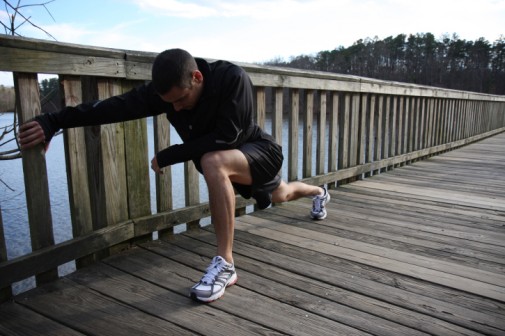To stretch or not to stretch

Think back to high school gym class. You may have started with a group stretch before every exercise whether it was running, soccer, tennis or even badminton. It’s smart to do, right? Not according to new research.
Two new studies have concluded that stretching may not be the best for athletes or even the occasional exerciser. The Journal of Strength and Conditioning Research says that stretching before weight lifting may cause you to be weaker and shaky. Another study from The Scandinavian Journal of Medicine and Science in Sports believes that stretching may be disadvantageous to the workout by reducing your endurance and strength.
The new reports seem to conflict with the common wisdom that stretching is always the right thing to do. But some fitness experts say the study results offer a good reason to be more thoughtful about stretching.
Jen Heggaton, certified athletic trainer at the Good Samaritan Health and Wellness Center in Downers Grove, Ill., says that for some specific exercises it is recommended that you stretch and others it’s not necessary.
“Generally with explosive activities that require quick action and speed, you will actually benefit from not stretching,” Heggaton says. “The reason is that for these exercises you want your muscle to be shorter so that you can have a very fast and quick contraction to give you more power with your exercise.”
Heggaton says these higher intensity exercises include sprint running, weight lifting, tennis and other quick movement sports. But other endurance activities require some type of stretching.
“When you are doing long-distance running, swimming or biking, you body will benefit from stretching,” Heggaton says. “If your muscles are tight during those long, repetitive workouts, they can pull a joint out of alignment and cause pain and even injury.”
Heggaton recommends trying a more dynamic stretching method by incorporating short exercises in your warm-up. She suggests doing squats, lunges, jumping jacks or pushups and then increase your intervals to warm up your muscles.
“These will get your muscles moving and you will have a greater range of motion. When you are not holding your body in the same position for an extended period of time, these exercises will ensure that you are not making your muscles too flexible,” Heggaton says.
Heggaton recommends working with a personal trainer or even talk your physician if you are new to high intensity and endurance activities.
Related Posts
Comments
7 Comments
About the Author
Sarah Scroggins, health enews contributor, is the director of social media at Advocate Health Care and Aurora Health Care. She has a BA and MA in Communications. When not on social media, she loves reading a good book (or audiobook), watching the latest Netflix series and teaching a college night class.


















are they talking about passive or active stretching?
Our trainer recommends active stretching before the endurance activities, but if you are doing more high-intensity work outs its recommended you may not need to stretch at all.
I take a spinning class twice a week, the instructor does not have us strech before getting on the bike but has us warm up first before increasing intensity. Sounds like I should be doing some type of stretching before getting on the bike?
Sounds like the warm-up that starts your spin class is a good way to lead into the high-intensity work out. According to this study, you don't need to stretch prior to this type of workout, unless you are doing endurance biking, they recommend a good warm-up stretch.
Two questions: 1)What about stretching AFTER weight liftng? 2)What about the value of yoga? Can yoga poses be considered stretching?
Hi Russ – these are great questions. I will ask Jen, but also think you may have posed some other great story ideas. Thanks for your comment!
Stretching is fine after weight lifting. The heavy part of your workout is done, which is when you wanted those muscles to be tighter, shortened, and more forceful.
Yoga poses are definately considered stretching, and are a great way to facilitate an active stretch because you are moving for much of the time. Yoga would complement your weight lifting program if performed AFTER you lift weights as a cool down or on opposite days when you are recovering from your weight program.